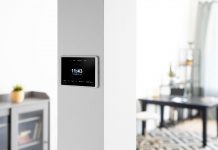A lot of people think that inverters power the house during outages, but the job of the inverter is just to convert the DC to AC. The real game hero is the battery. Without a battery, the inverter is just an overpriced paperweight, so picking an inverter battery is important.
But most people tend to think that just any battery works, and nothing could be further from the truth. Picking the best inverter battery is super important, as it means that your power needs are met and everything is right, so what features should your new battery have? Well, in this article, we’re going to dive into just that.
Understanding Inverter Batteries
But first, we need to understand what inverter batteries are. To put it simply, they are batteries that are paired with an inverter. They store power and supply it to the inverter during a power outage, which the inverter converts into AC and powers the entire household. Now there are many types of Inverter batteries, they are:
Lead-Acid Batteries: Affordable & Reliable
Lead-acid batteries are a common type of battery used in inverters because they are cheap and reliable. Lead-acid batteries are very common, but they need to be taken care of and checked on often to make sure the water levels are right. A lead-acid battery could be a great alternative if you want the best battery for your inverter that is also affordable and has been shown to function in most conditions.
Gel Batteries: Maintenance-Free with High Performance
Gel batteries are a different kind of lead-acid battery that works better and doesn’t need any maintenance. Their gel-based electrolyte keeps them from leaking, making them safer than regular flooded lead-acid batteries. A gel battery is the best choice if you want an inverter battery that doesn’t need much maintenance.
Tubular Lead-Acid Batteries: Built for Longevity
Tubular batteries are a newer type of lead-acid battery that are noted for their long life and good performance. The plates won’t corrode because these batteries have a stronger design with a tubular shape. If you want the best battery for an inverter that can handle deep discharge cycles, tubular lead-acid batteries are the way to go. They will last longer and work better over time.
Lithium-Ion Batteries: The Future of Power Storage
Lithium-ion batteries are a newer and better technology that costs more up front but has several benefits, including faster charging, longer life, and less maintenance. Lithium-ion is the future of energy storage if you want the best battery for an inverter that uses the latest technologies and is built to be very efficient.
Key Features to Consider in Inverter Batteries
Now that you understand what inverter batteries are and the type of batteries available in the market, there are some key features you need to consider before choosing one. The tale below easily explains these features, so you don’t miss out on anything.
| Feature | What It Means | Why It Matters | Quick Tip |
| 1. Battery Capacity & Backup Time | Measured in Ah (Ampere-hour) – higher Ah means longer backup. Capacity depends on your total appliance load × average outage duration. | Ensures you get the backup you actually need without overspending or wasting space. | For 4–5 hrs of fans + lights + TV, you’ll need a different capacity than a shop running computers. |
| 2. Battery Type & Technology | Tubular = Long life, heavy use, best for frequent, long cuts.Lead acid = Quick charge, affordable, for shortcuts.Gel = Maintenance-free, eco-friendly, steady performance. | Different designs suit different usage patterns and maintenance preferences. | Pick tubular for durability, lead-acid for budget, gel for zero-maintenance needs. |
| 3. Battery Life & Durability | Depends on build quality, deep cycle ability, and corrosion-resistant materials. | A longer life means a better return on investment. | Expect 3–5 yrs on average; premium tubulars can last up to 7 yrs. |
| 4. Maintenance Requirements | Low-maintenance plants need periodic water topping. Maintenance-free needs none. | Proper care extends life and performance. | Look for water level indicators and easy-refill designs if you choose lead-acid. |
| 5. Charging Speed & Efficiency | How quickly the battery charges and how much power it wastes. | Fast charging is crucial in areas with short power availability. | Pair with a compatible inverter to avoid overcharging. |
| 6. Safety Features | Includes overcharge, short circuit, and thermal protection; spill-proof designs; vent plugs. | Protect your home, devices, and family. | Go for batteries with safety certifications and child-safe designs. |
Conclusion
These features are quite important when buying the best inverter battery, it is because these features not only ensure reliable power backup, but also ensure safety and convenience. Remember, the best inverter battery will provide you with an ample amount of power, while also charging quickly, and won’t be hard on your pocket. By ensuring all of this, you can take a sigh of relief when you choose the best inverter battery for your home.






